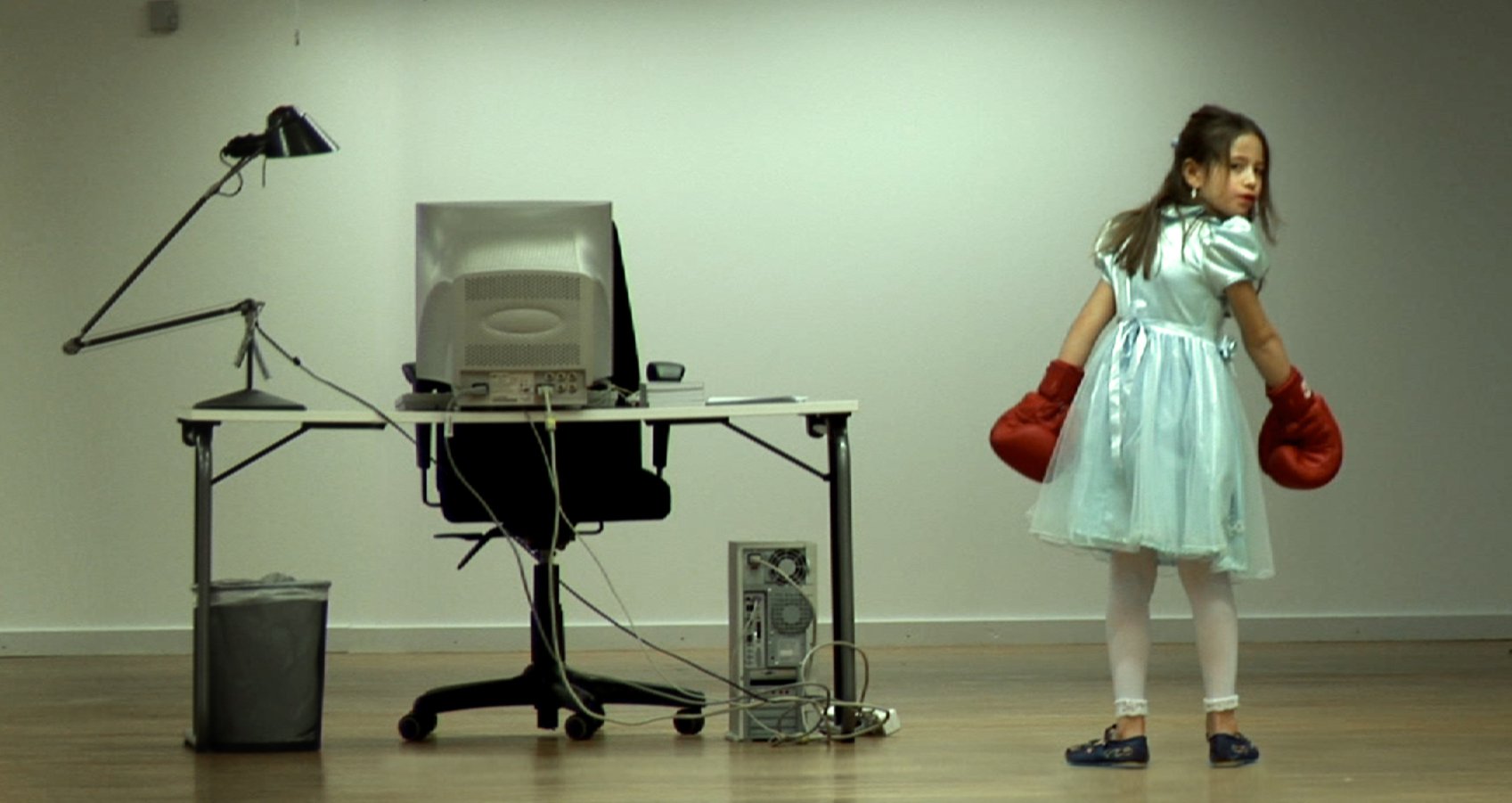
Kids. One never knows where one has them. And when they do show up, they have no desire to talk about where they’ve been. Sometimes they are like UFO’s. Wonderfully strange beings. Where do they get it from? We strain ourselves remembering how it was. Blurry images come to the surface in a haphazard order. They glide by and sink under.
In the next moment the daughter lies flat on the floor with her arms and legs wide apart. She shouts out a happy proposition to those who can and want to listen: ”I am a pizza now!” Obviously. No one will eat her.
The daughter in this case happens to be the artistic duo’s very own. Together with her two brothers she has taken her place in the scenarios, which constitute Kids on the Slide. With a princess dress, boxing gloves, pyjamas, flippers, spades, headphones and other necessary appendages, but above all with bodies and gestures.
The surroundings they chose to go and play in can barely be described as appropriate. A deserted parking garage. In the middle of cranes and containers in the harbour. An empty office space. Urban environments instead of out in the fresh air of the countryside. But they don’t have the desire to listen to what we have to say about it. They don’t want to have us following them. Yet when we try to approach them, we get their critical attention. (Sometimes in the form of gestures, which cannot be misinterpreted. And which they really shouldn’t be familiar with at their ages!)
And see, they manage perfectly well without us. Because they have special equipment. Whenever the need is demanded, they glide away and disappear. A frictionless move to the next screen.
The Alkantara Festival, Lisbon, 18 June 2006.
It is late evening when three policemen suddenly show up in Espaço. Under the pretext of making sure everything is in order, they also take the opportunity to inspect the artwork. An authoritative constable positions himself in front of a kid on the slide, it is the little girl in a ballet costume who is standing by the indoor pool. When he steps closer the girl turns around and looks at him and forms her arms like before a swan dive and glides away to the next screen. He follows her, with the result that she completely disappears from the image. He puts his hands on his sides and scrutinises all three screens, but the girl is gone. When he walks away she shows up in the image again, only to quickly glide out of the frame to the right. The policeman nods benevolently as if he approves the maneuver.
The next child in turn on the screen is the girl in a princess dress with red boxing gloves. The bar owner José is familiar with all the figures and quickly runs up and waves at his favourite on the screen, and becomes totally delighted when the sweet girl does her ”screw you” gesture at him.
Kids on the Slide – a headline with double meanings: either that which gives a light shiver down the spine, a reflex to protect kids against all danger, and the insight that it is impossible. Or, the very literal meaning, and with the feeling of freedom and relief; here we are talking about the power of fantasy, pure will and a couple of well-oiled soles.
Earlier in the day:
Luis, a Brazilian dancer, mimics the kids’ movement patterns and follows them from screen to screen. With fingersnaps and sweeping gestures he tries to steer them, to command them to move themselves according to his wishes. However the kids on the screen don’t let themselves get talked into it. After a while, he has learned the prerequisites for their movements and adjusts his gestures and fingersnaps to them. Now it looks as if the kids obey Luis’ commands, but both Geska and Robert who stand and steal a peek, and Luis himself, know that it is just an illusion.
Five kids from about three to five years old have discovered the exhibition. They run around and overturn men, turn women and when they discover their friends kids on the slide, they begin to knock on the screens, dance and hop around them and throw teddy bears at them. All with loud screams and laughs.
We stop looking at the children on the screen and look at ourselves: I have become so big. But we don’t ask the question that is closer to hand: Where did the little me go?
About the artwork Kids on the slide
Excerpt from: Andersson, G H., Brečević, R., Thunell, H. (2009) Performing Pictures Maribor: Association for Culture and Education Kibla. (Second Edition Tox. Year 13; No. 28)